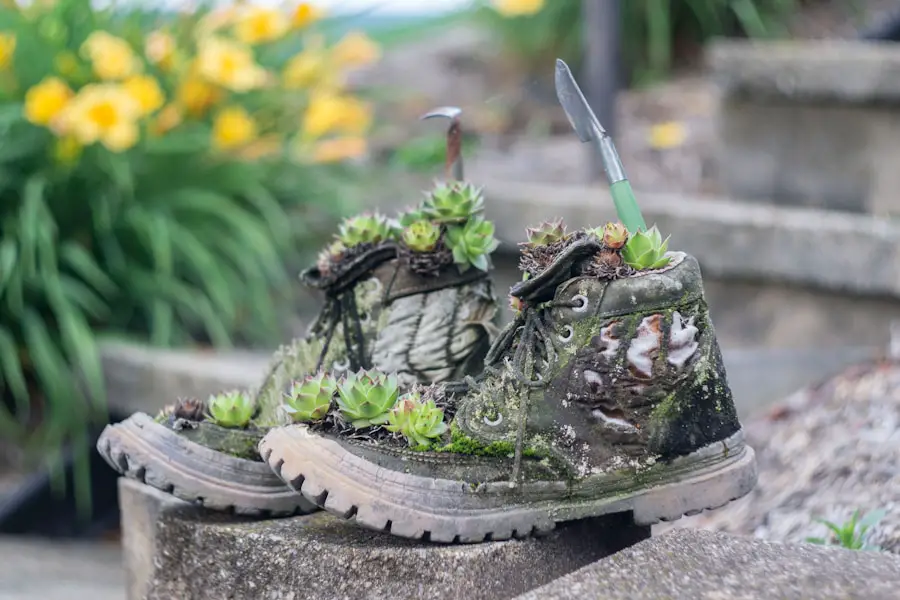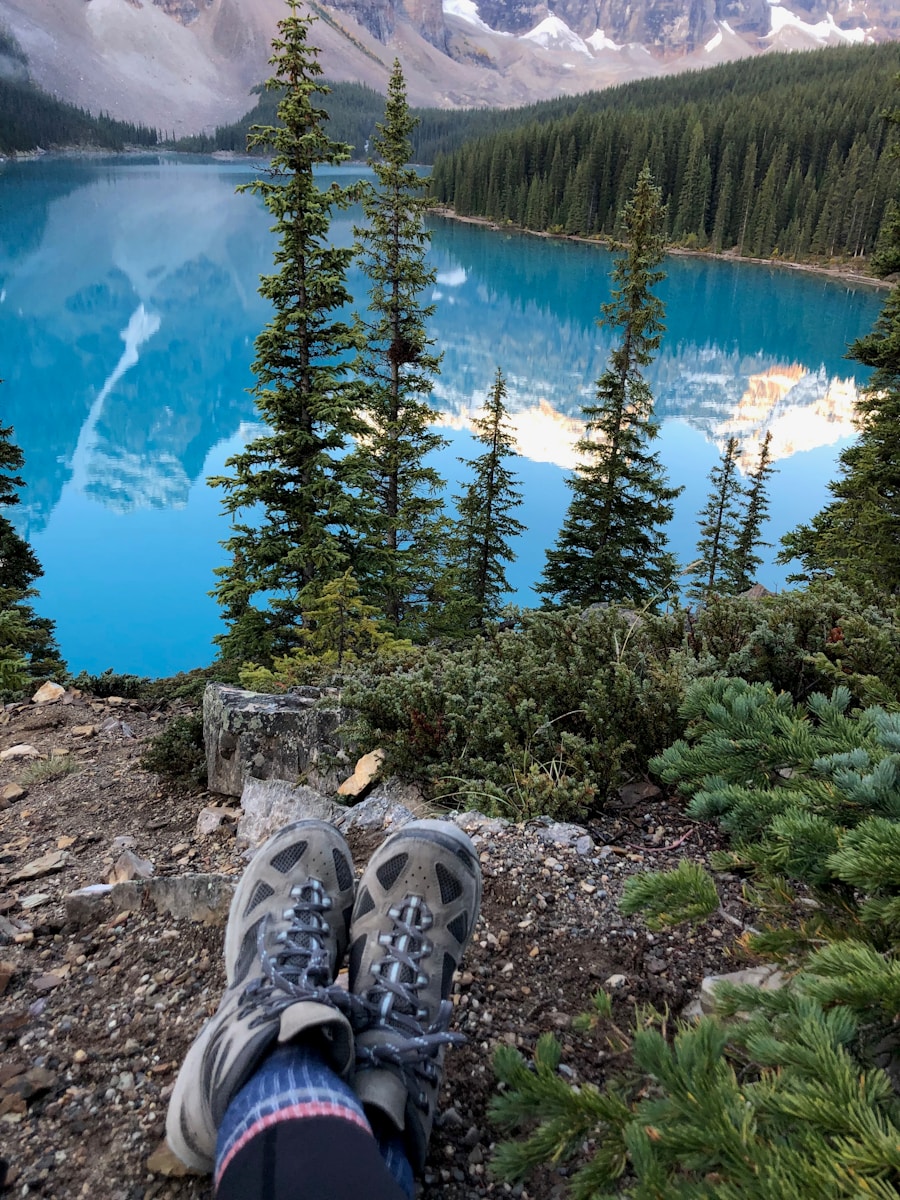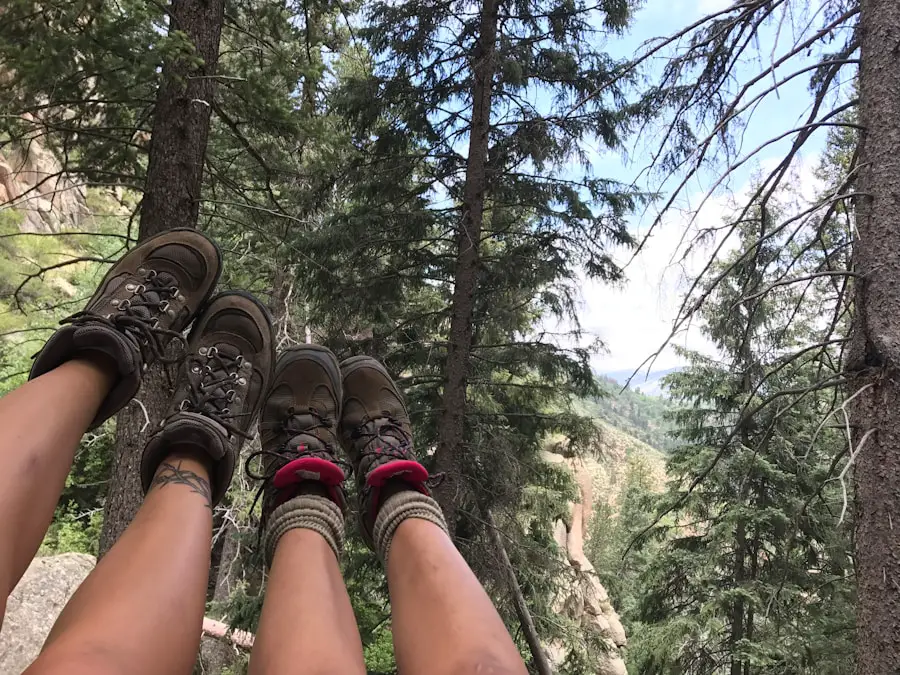When embarking on a hiking adventure, the significance of proper footwear cannot be overstated. The right shoes serve as the foundation for a successful and enjoyable trek, providing the necessary support, protection, and comfort required to navigate diverse terrains. Hiking often involves traversing uneven ground, steep inclines, and rocky paths, all of which can place considerable strain on the feet and legs.
Without appropriate footwear, hikers may experience discomfort, fatigue, or even injury, which can detract from the overall experience and lead to potential safety hazards. Moreover, proper hiking footwear is designed to enhance performance by offering features that cater specifically to the demands of outdoor activities. These shoes are engineered to provide traction on slippery surfaces, stability on uneven ground, and cushioning to absorb impact.
The right pair of hiking shoes can make a significant difference in how one feels during and after a hike, allowing for longer excursions and more challenging trails. Therefore, investing in quality hiking footwear is not merely a matter of comfort; it is essential for ensuring safety and maximizing enjoyment in the great outdoors.
Key Takeaways
- Proper footwear is crucial for hiking to provide support, stability, and protection for your feet and ankles.
- Hiking shoes offer benefits such as traction, durability, and waterproofing to enhance your hiking experience.
- Alternatives to hiking shoes include hiking boots, trail running shoes, and approach shoes, each with their own advantages and limitations.
- When choosing hiking shoes, consider factors such as fit, support, traction, and waterproofing to ensure they meet your specific needs.
- Different types of terrain, such as rocky, muddy, or snowy, require specific hiking shoes to provide the necessary grip and protection.
Benefits of Hiking Shoes
Hiking shoes come with a plethora of benefits that cater to both novice and experienced hikers alike. One of the primary advantages is their specialized design, which often includes features such as reinforced toe caps, waterproof materials, and breathable fabrics. These elements work together to protect the feet from environmental hazards like sharp rocks, mud, and water.
For instance, a good pair of waterproof hiking shoes can keep feet dry during unexpected rain showers or while crossing streams, which is crucial for maintaining comfort and preventing blisters. In addition to protection, hiking shoes are engineered for optimal traction. The outsoles of these shoes typically feature aggressive tread patterns made from durable rubber compounds that grip various surfaces effectively.
This is particularly important when navigating steep or slippery trails where losing footing can lead to falls or injuries. Furthermore, many hiking shoes are designed with lightweight materials that reduce fatigue over long distances, allowing hikers to maintain their energy levels throughout their journey. The combination of support, protection, and traction makes hiking shoes an indispensable part of any hiker’s gear.
Alternatives to Hiking Shoes

While hiking shoes are specifically designed for outdoor activities, there are several alternatives that some hikers may consider based on their preferences or specific needs. Trail running shoes have gained popularity among those who prefer a lighter option that still offers decent traction and support. These shoes are designed for speed and agility on trails, making them suitable for fast-paced hikes or running on uneven terrain.
However, they may lack some of the protective features found in traditional hiking shoes, such as reinforced toe caps or robust ankle support. Another alternative is the use of approach shoes, which are designed for both hiking and climbing. These shoes typically feature a sticky rubber sole for enhanced grip on rocky surfaces and a more rigid construction that provides stability during technical climbs.
While approach shoes can be an excellent choice for those who plan to tackle both hiking and climbing in one outing, they may not offer the same level of cushioning as dedicated hiking footwear. Additionally, sandals designed for hiking can be an option in warmer climates; however, they provide less protection and support compared to closed-toe shoes. Each alternative has its pros and cons, making it essential for hikers to assess their specific needs before making a choice.
Considerations for Choosing Hiking Shoes
| Consideration | Importance |
|---|---|
| Fit | Very important – ill-fitting shoes can cause blisters and discomfort |
| Support | Important – proper support reduces the risk of ankle injuries |
| Traction | Very important – good traction provides stability on various terrains |
| Waterproofing | Important – keeps feet dry and comfortable in wet conditions |
| Weight | Important – lighter shoes reduce fatigue during long hikes |
Selecting the right hiking shoes involves several critical considerations that can significantly impact comfort and performance on the trail. One of the foremost factors is fit; shoes should be snug but not overly tight, allowing for some movement while preventing blisters or discomfort. It is advisable to try on hiking shoes with the socks intended for use during hikes since thickness can affect fit.
Additionally, considering the shape of one’s foot—whether it is wide, narrow, or has high arches—can help in finding a shoe that provides adequate support. Another important consideration is the type of terrain one plans to hike on. Different trails present unique challenges that may require specific features in footwear.
For example, if a hiker intends to traverse rocky or technical terrain, they may benefit from shoes with stiffer soles for better stability and protection against sharp objects. Conversely, if the hike involves long distances on well-maintained paths, lightweight shoes with ample cushioning may be more appropriate. Furthermore, evaluating weather conditions is crucial; waterproof shoes are essential in wet environments while breathable options are preferable in hot climates.
Types of Terrain and the Need for Hiking Shoes
The type of terrain encountered during a hike plays a pivotal role in determining the necessity of specialized hiking footwear. For instance, rugged mountain trails often feature loose rocks, steep inclines, and unpredictable weather conditions that demand shoes with excellent grip and ankle support. In such environments, a sturdy pair of hiking boots with high tops can provide the necessary stability to prevent ankle sprains while navigating challenging paths.
Conversely, flat and well-maintained trails may not require as much support or protection; lightweight trail runners or low-cut hiking shoes could suffice in these situations. However, even on easier trails, having proper footwear can enhance comfort and reduce fatigue over long distances. Additionally, hikers venturing into wet or muddy areas should prioritize waterproof options to keep their feet dry and comfortable throughout their journey.
Understanding the specific demands of various terrains allows hikers to make informed decisions about their footwear choices.
Potential Risks of Not Wearing Hiking Shoes

Neglecting to wear appropriate hiking footwear can lead to a range of potential risks that can compromise both safety and enjoyment during outdoor excursions. One of the most immediate concerns is the increased likelihood of foot injuries such as sprains or fractures. Without proper support and protection from rugged terrain, hikers are more susceptible to twisting an ankle or stepping on sharp objects that could cause cuts or punctures.
Additionally, inadequate footwear can lead to discomfort that detracts from the overall hiking experience. Blisters caused by friction from ill-fitting shoes can become painful and may force hikers to cut their trips short or alter their routes significantly. Furthermore, wearing non-specialized footwear like sneakers or sandals may result in poor traction on slippery surfaces, increasing the risk of falls and accidents.
Ultimately, failing to invest in suitable hiking shoes can transform what should be an enjoyable adventure into a painful ordeal fraught with risks.
Tips for Hiking Without Hiking Shoes
For those who find themselves without access to traditional hiking shoes but still wish to embark on a hike, there are several strategies that can help mitigate risks while enhancing comfort. First and foremost, it is crucial to choose footwear that offers some level of support and protection; sturdy sneakers with good tread can serve as a temporary alternative if hiking shoes are unavailable. Ensuring that these shoes fit well is essential; loose-fitting footwear can lead to blisters and instability.
Another tip is to be mindful of the terrain when hiking without specialized footwear. Opting for well-maintained trails with minimal obstacles can reduce the risk of injury significantly. Additionally, hikers should pay close attention to their surroundings and adjust their pace accordingly; taking smaller steps can help maintain balance on uneven ground.
If possible, carrying a pair of lightweight sandals or flip-flops for stream crossings or breaks can provide relief while allowing feet to breathe.
Making the Right Choice for Your Hiking Adventures
Choosing the right footwear for hiking is a decision that should not be taken lightly; it has far-reaching implications for safety, comfort, and overall enjoyment during outdoor adventures. With various options available—from specialized hiking shoes to alternatives like trail runners or approach shoes—hikers must carefully consider their specific needs based on terrain, weather conditions, and personal preferences. By prioritizing fit and functionality while being aware of potential risks associated with inadequate footwear, individuals can make informed choices that enhance their hiking experiences.
Ultimately, whether one opts for traditional hiking boots or explores alternative options, understanding the importance of proper footwear is key to enjoying nature’s beauty without compromising safety or comfort. As every hiker’s journey is unique, taking the time to select suitable footwear tailored to individual needs will ensure countless memorable adventures in the great outdoors.
If you’re planning on embarking on a hiking adventure, you may be wondering if you need hiking shoes. According to a recent article on TakeTravelInfo, having the right footwear is essential for a successful hike. To learn more about the importance of hiking shoes and how they can enhance your outdoor experience, check out their article here.
FAQs
What are hiking shoes?
Hiking shoes are specialized footwear designed for outdoor activities such as hiking, trekking, and backpacking. They are designed to provide support, stability, and protection for the feet and ankles while navigating various terrains.
Do I need hiking shoes?
Whether or not you need hiking shoes depends on the type of hiking or outdoor activity you plan to engage in. For light and casual hiking on well-maintained trails, regular athletic shoes or trail running shoes may suffice. However, for more challenging terrain, longer hikes, or backpacking trips, hiking shoes are recommended for their added support and protection.
What are the benefits of hiking shoes?
Hiking shoes offer several benefits, including better traction on uneven or slippery surfaces, ankle support to prevent injuries, protection from rocks and debris, and durability to withstand the rigors of outdoor activities. They are also designed to be breathable and comfortable for long periods of wear.
Can I use regular sneakers for hiking?
While regular sneakers may be suitable for light and casual hiking on well-groomed trails, they lack the specialized features of hiking shoes such as rugged outsoles, toe protection, and ankle support. For more challenging terrain or longer hikes, it is recommended to invest in a pair of hiking shoes for better performance and safety.
What should I look for in hiking shoes?
When choosing hiking shoes, consider factors such as the type of terrain you will be hiking on, the level of ankle support needed, the fit and comfort of the shoes, and the durability of the materials. It’s also important to try on different styles and brands to find the best fit for your feet.
